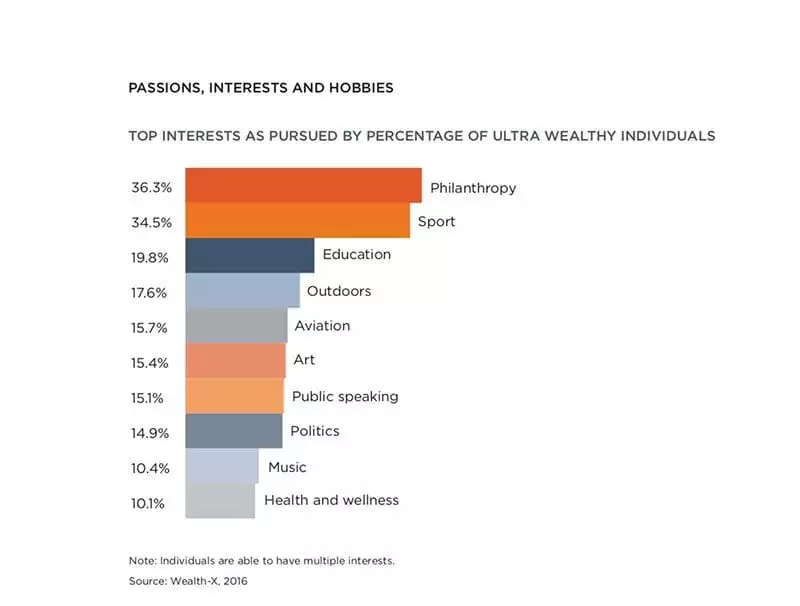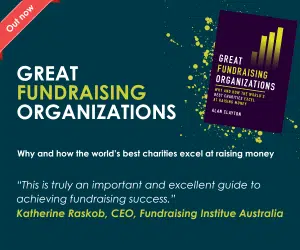SUMO and fundraising: five New Year’s resolutions for fundraisers
It’s that time of year. You need to have a think about 2017 and make some plans for 2018.
Let’s begin by agreeing that it’s been a tough year in fundraising:
- Some ill-founded thoughts from the chief regulator
- Continuing challenge from everyone’s favourite paper- the Daily Mail
- Worries about how ready the industry is for GDPR
- And more…add your own…
But with all these issues I think we have to adopt the ancient wisdom of the east – the SUMO philosophy. Shut Up, Move On. Yes, the best advice I can offer is to stop moaning and worrying and think about the future.
To help you move on below are some draft new year’s resolutions. They’re designed to be a little provocative, so please feel free to add… or even subtract. Focus is important.
1. Don’t get obsessed with the Digital Delusion
People seem to be pouring money and resources into digital, terrified that they will miss some imaginary boat. (The Titanic comes to mind. Also a bit of leading edge technology) The reality is that online giving is still small, and lots of what’s classed as online giving is actually just fulfilment of an appeal made by DM or DRTV. Lots of noise is being made by digital agencies, but make sure you check out the actual results being delivered. (Oh, and of all the delusions crowdfunding as a saviour has to be one of the biggest.
Your resolution: invest wisely in digital, but don’t expect it to take the place of other channels anytime soon. Avoid digital agencies and crowdfunding sites bearing gifts of special deals or a guaranteed way to reach millennials.
(See online giving trends at the Institute of Fundraising for the latest data. In the UK, overall giving rose 2.8% in 2016, with online giving up 2.2%)
Advertisement
2. Put some energy into Major Donors
There’s good news and bad news here. The bad news from a social justice point of view is that the gap between the rich and poor in society is growing greater almost daily. This is inequitable. And promotes social
conflict. That’s a bad thing.
The good news, I guess, is that there are more wealthy people that ever before. And they are interested in philanthropy – according to the authoritative Wealth X report.

Philanthropy is wealthiest people’s top passion. Source: Wealth-X 2016
The irony is that many of them invest their money in a very skewed way. By some estimates almost 50% of U/HNWI philanthropy worldwide goes to HE, with ‘undeserving’ institutions like Oxford and Harvard doing best of all out of this.
(Note that Oxford was recently forced to reveal that there 10 out of 32 Oxford collages where no BAME student has been admitted in the last year. So not much of the 34b campaign seems to be going towards social equity. Not to mention the universities paying the kind of VC salaries that would cause a major scandal in a charity CEO.)
Your resolution: up your game with U/HNWI. They have the scale of money that can make a transformational difference. And lots of them want to. And HE is successful because it’s offering them something that charities aren’t. Find out what it is. And put some energy into this important source.
3. Get your Board on board… and up to speed
Many boards seem disconnected from the reality of fundraising. I hear tales every week of ‘ignorant’ – in the true sense – board members, offering ill-founded advice to smart but cowed fundraising directors. They also need to be up to speed on their responsibilities. One of my major concerns in 2017 was the collapse of Kids Company. Not so much because of the rogue CEO herself, or even the government’s complicity in offering random ‘bungs’ to fill increasingly unsustainable gaps. The real
challenge here was the board’s reluctance to understand and get engaged in fundraising. (You need to look at the net worth on that board – none of whom came to the rescue when the financial chips were down).
To succeed your board needs to ‘get’ the fundraising plot (and that includes stopping carping about how much they ‘hate’ F2F, love special events etc.).
Your resolution: Upskill your Board. Provide them with training in how to support fundraising effectively. INSIST that they all contribute financially at whatever level they can. And if members don’t want to acquire the skills and competencies they need for the 21st century, then let them go and replace them with people who do.
4. Stop measuring the wrong thing
I still hear fundraisers – and see above, Boards – endlessly talking about Return on Investment (RoI), and more specifically annual RoI. The challenge is this is the metric of quick fix, transactional, fundraising. (It also massively varies with some charities like MSF achieving 7:1 and World Vision sometimes having to settle for 2:1. Which one is success?)
The better metric is Life Time Value (LTV) the likely level of return over time. If you want to know more about why it’s important have a look at this blog at The Agitator.
Linked it this is the important of measuring the quality of the donor experience- that’s want’s important to the supporter.
Your resolution: What gets measured gets managed as Peter Drucker said. But you need to make sure you’re measuring the right thing, and RoI almost certainly too short term a measure. (It’s like looking just over the bonnet of the car on the motorway. Develop your long-term vision. And get everyone else looking in the right direction).
(If you want to hear the latest thinking about how to manage and improve the donor experience through decision science you need to attend this event).
5. Start planning seriously for legacies
It’s mostly true: boomers have scooped the big prize in terms of current wealth. There will be competition for that wealth as boomers approach mortality. Millennials want some. Healthcare might need some. But the good news is all the indications
are that Boomers will continue meet these obligations and be generous to charity.
The value of legacies in the UK, is a staggering £2.4B each year. As Legacy Voice says, ‘It’s sometimes hard to comprehend the scale of such a big number.’ They put it into context like this “it will take 44 years, and 1.75M more runners to raise the
same amount.” That’s a lot. And you need to invest NOW to get your share. Begin that conversation with your closest supporters. Explain to them what they can do.
Give them agency, and an opportunity to be philanthropic in a way they want to.
Your resolution: Stop thinking exclusively short term, invest now in proactive legacy marketing to ensure you get the results you need long-term. (Make sure to include gifts in memory, too, since that a way many people now want to be remembered
rather than with flowers etc) take supporters on a long-term journey over the next 10 years…





